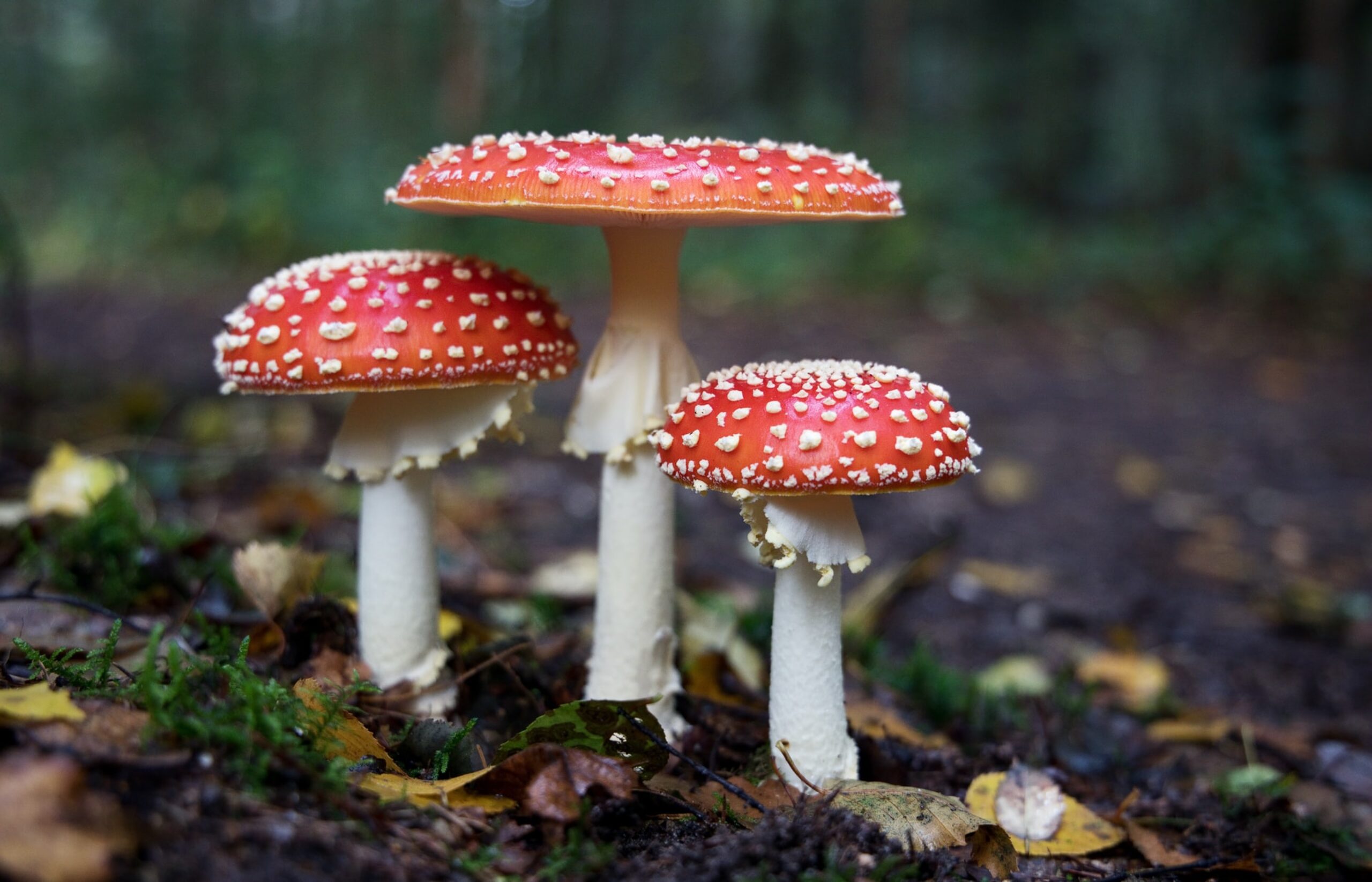
Fungi comes in all joyous shapes and colours, and is everywhere in the UK. Some might make you blush, some may inspire you to wonder for the world beyond. Some may remind you that despite everything – nature is awesome.
One quick safety point before we start: this article is meant as lighthearted introduction to the UK’s amazing fungi, so you shouldn’t use it as a guide to finding edible mushrooms. Ok, let’s get to appreciating some of the UK’s most fantastic fungi!
1. Fly agarics
Arguably the most famous fungus of them all. Not only is it an emoji, you’ll find depictions of the red and white mushroom in fashion, art, film, and video games.
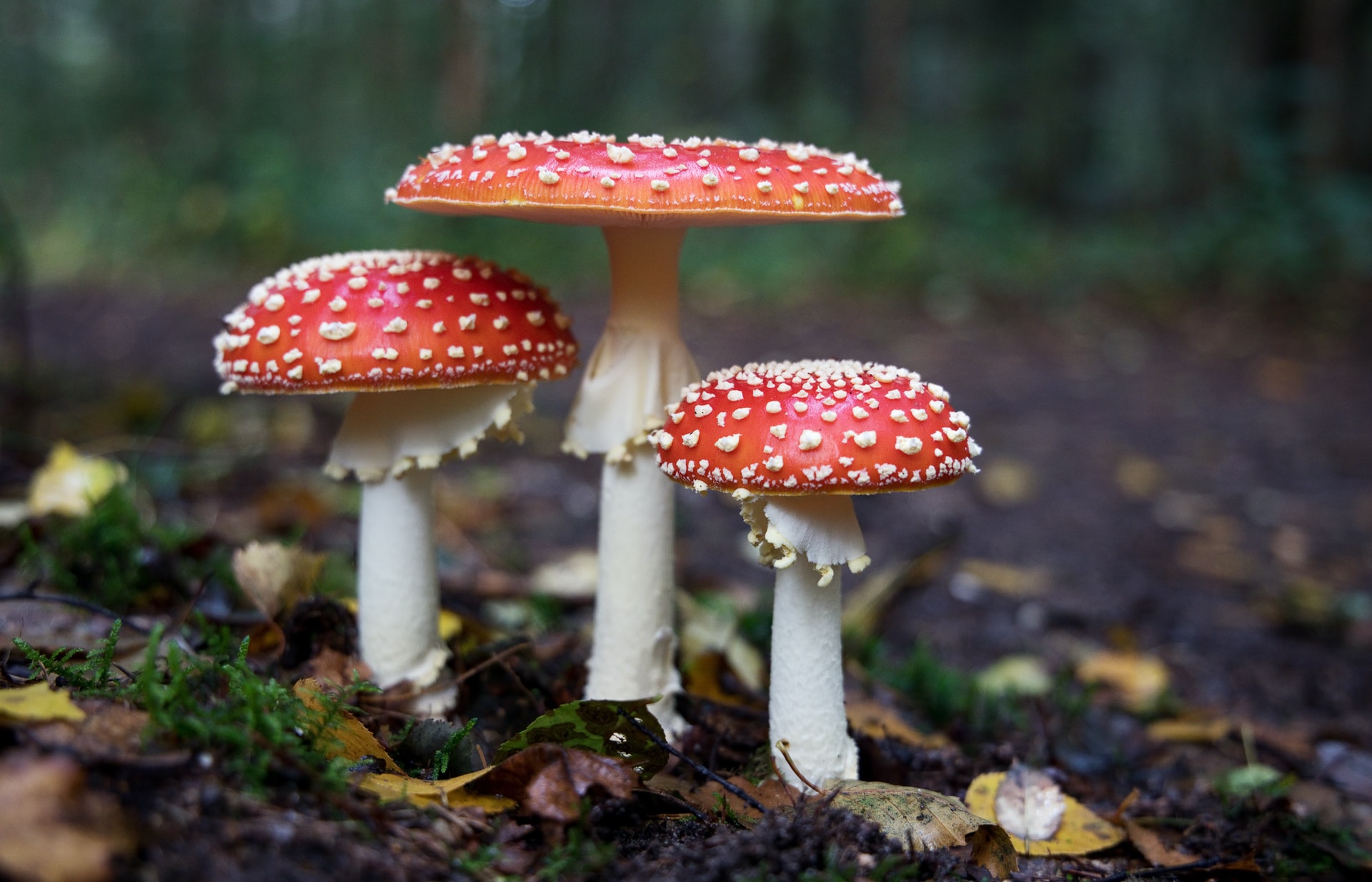
You’ll find them under Birch trees in woodland around late summer and autumn. Despite their fairytale appearance, Fly agarics are toxic. So best not try this one at home.
Scientific name: Amanita muscaria
2. Devil’s Fingers aka octopus stinkhorn or octopus fungus
Ok, so these lil creatures are rare in the UK. But they’re too amazing to leave off the list.
This fungi looks like one of Cthulhu’s pets from the underworld. Its life cycle is straight out of a horror movie. First it hatches from a slimy, gelatinous ‘egg’. As it grows, the bright red tentacle-like arms erupt from the egg like something from your worst nightmares. Watch the timelapse above to see what I mean.
Scientific name: Clathrus archeri
3. Witches butter aka yellow brain, golden jelly fungus, yellow trembler
This fungus looks like a gelatinous, deliciously disgusting, bright, yellow mess. And most definitely has the best nicknames of the lot.
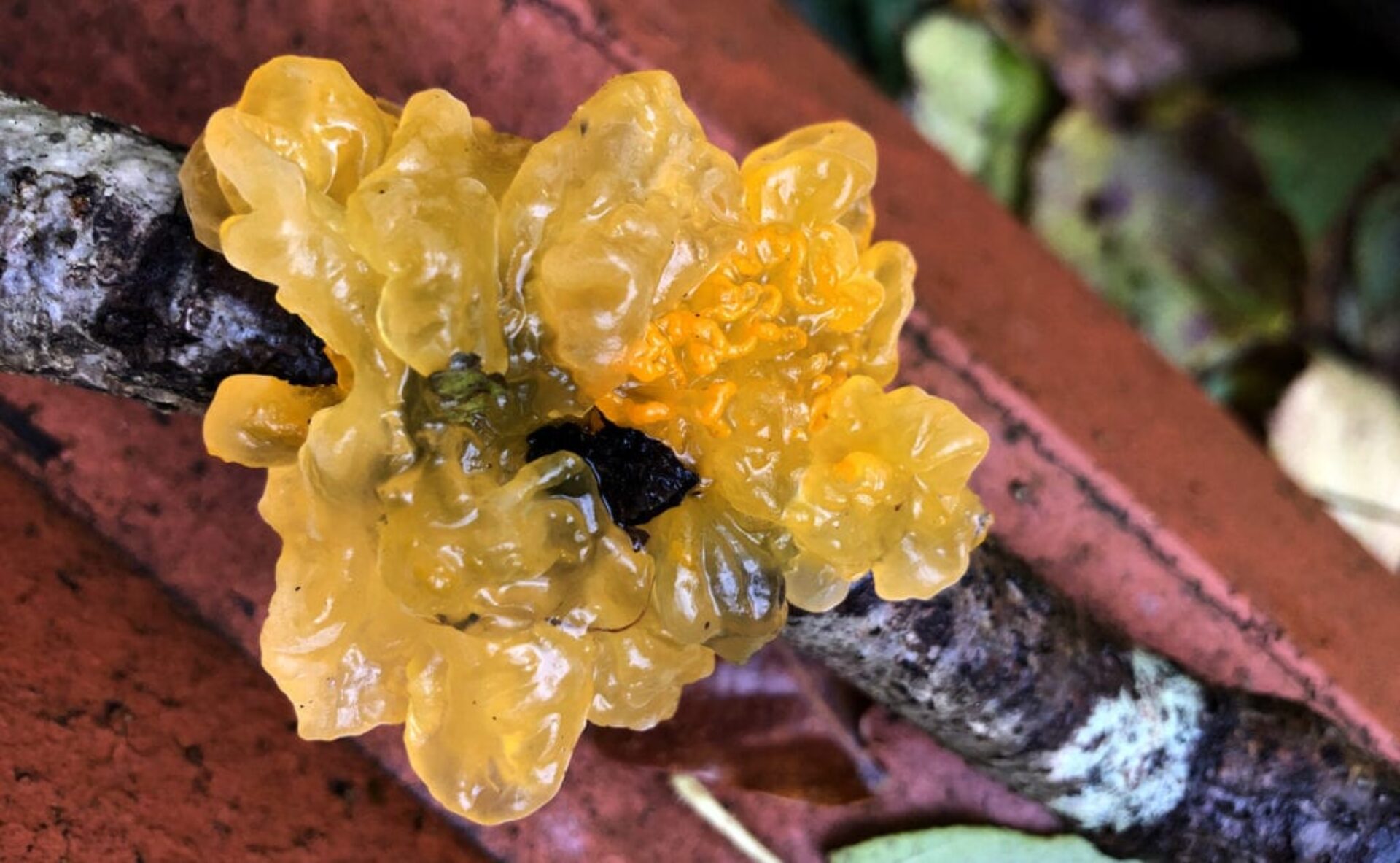
It’s impossible to resist the temptation to give this fungi a good ol’ wobble. It can be found clinging to sticks and branches.
Scientific name: Tremella mesenterica
4. Stinkhorns
The common stinkhorn wins by a country mile for best latin name – Phallus impudicus – but this tropical variety is probably the most impressive. Watch the video and wait for the drop…
Common stinkhorns emerge out of an egg, known as a “witches egg” and as it grows it has a green coating on the tip called the gleba – which smells like rotting flesh. Flies eat the gleba and leave behind a white conical tip. It is very common in the UK, Ireland and most of mainland Europe. It grows in all types of woodlands and gardens.
Scientific name: Phallus impudicus
5. Wood Ear aka Jelly Ear
An ear-like fungus that grows on Elder trees. If you’re lucky you can find these out and about in January and February.
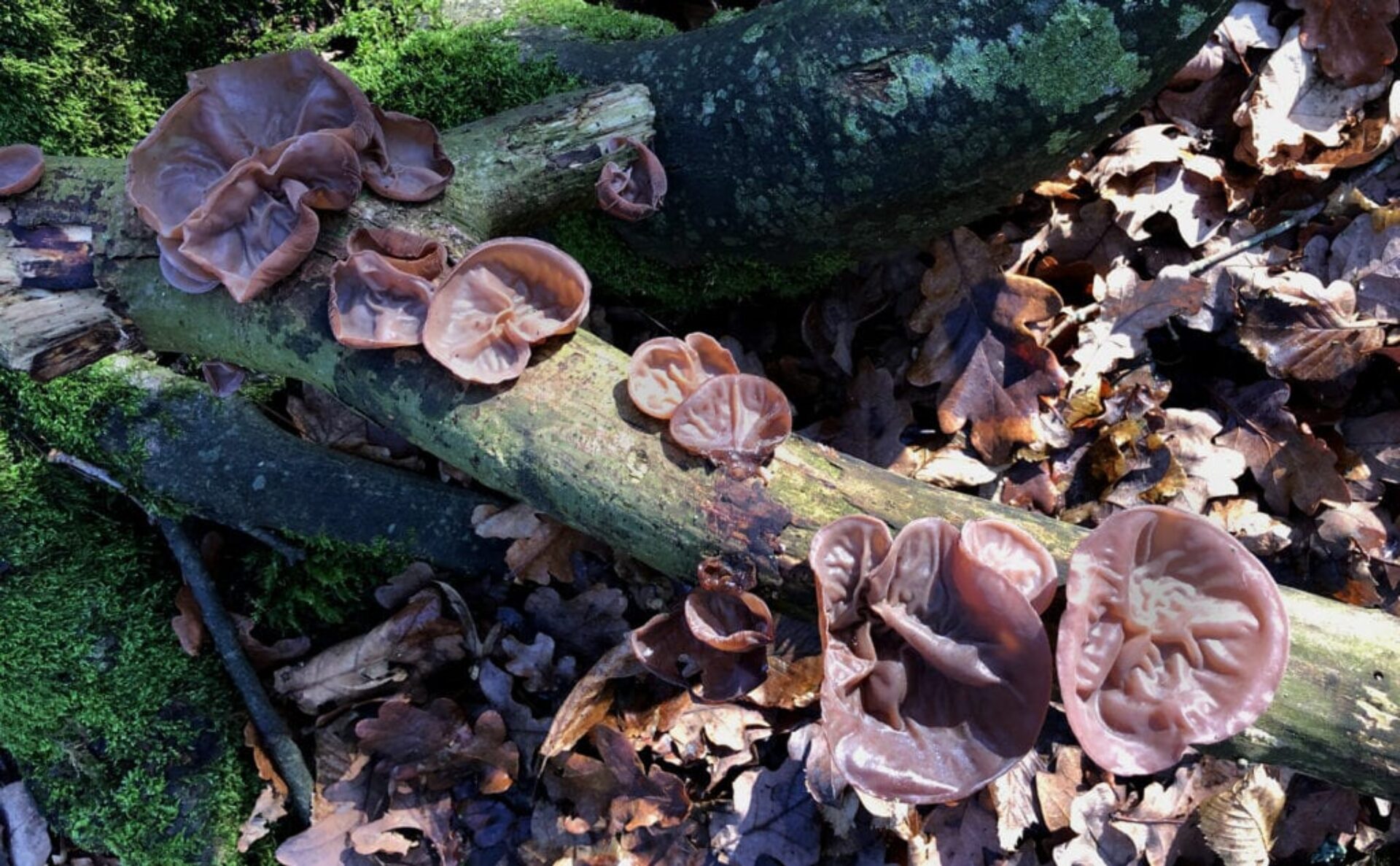
This one has an interesting and dark history. It used to be known as Jews Ear. And that is still present in the latin name. It was originally named after the apostle, Judas, who allegedly hanged himself from an Elder tree. These days, that name is no longer used or accepted. Wood ear is a much more fitting name for these fleshy humanoid fungi.
Scientific name: Auricularia auricula-judae
6. Shaggy ink caps aka Lawyers wig, Judges wig
As the name suggests, this fungi looks like it’s covered in shaggy fur. The underside starts out white, then turns black and secretes a black liquid filled with spores (hence the ‘ink cap’ name). Swipe through the slideshow below to see how it transforms in just a few days.
It is very common and can be seen at the roadside, in parklands and even popping up in lawns.
Scientific name: Coprinus comatus
7. Chicken of the woods
Huge. Weird. Alien-like. And an utter joy to find! This fungus has a bright sulphur colour that fades to a pale yellow.
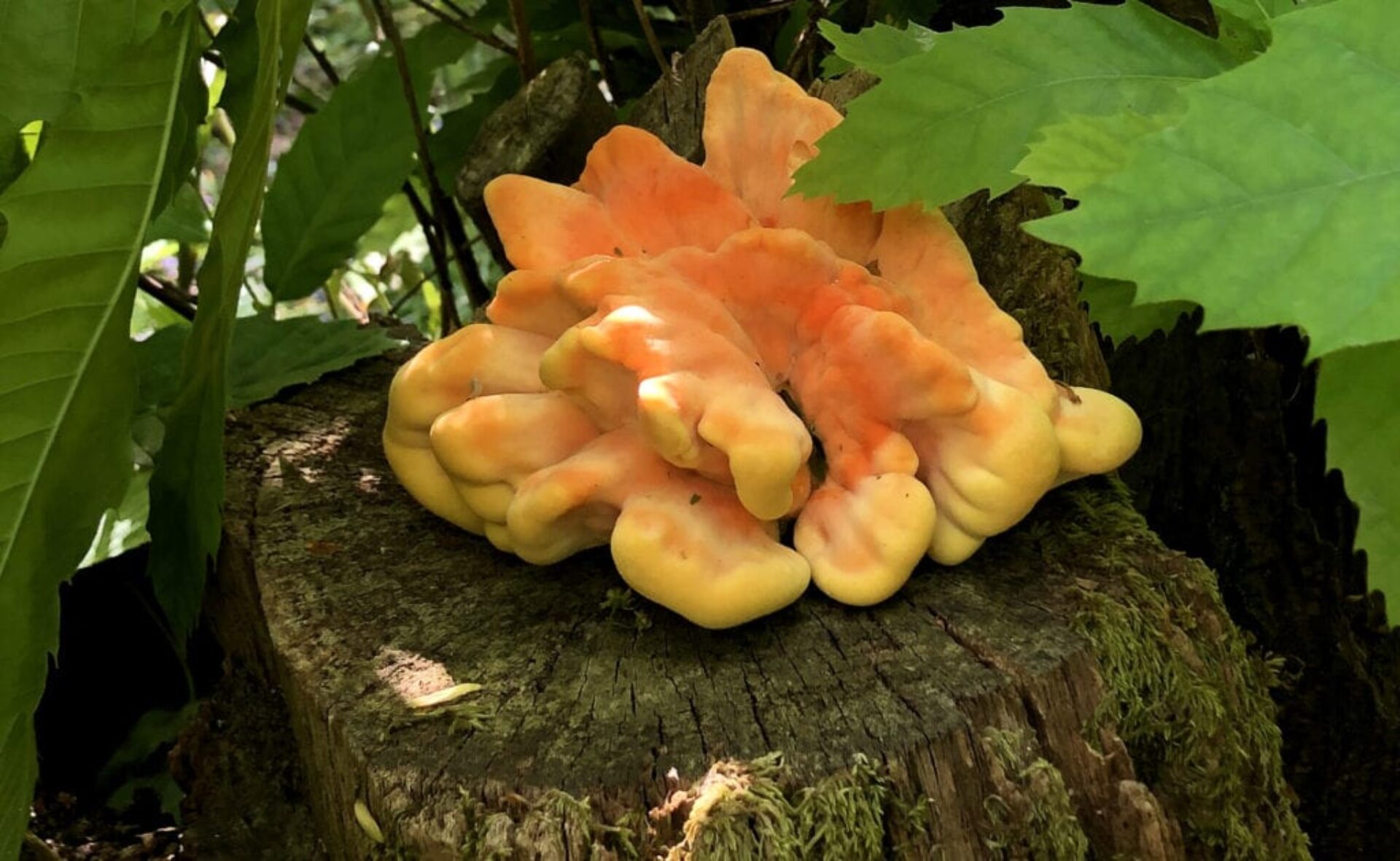
When young, they’re plump and fleshy; but as they get older, they spread and fan themselves out. It fruits from May to August on trees and stumps. Not to be confused with ‘Hen of the Woods’ which is a different fungi with a confusingly similar name.
Scientific name: Laetiporus sulphureus
8. Turkey tail
Turkey tail is a species of fungus that closely resembles – you guessed it – a turkey’s tail. (I love how the fungi world is so literal).
This glorious fungi is very common and can be found on rotting stumps and branches throughout the year – though apparently they are at their best in autumn and winter.
Scientific name: Trametes versicolor
9. Puffballs
White, cute and spiky – need I say more!
The puffball grows in fields, gardens, along roadsides, and in grassy clearings in woods. Looking closely you can see it’s covered in spines and warts.
Scientific name: Lycoperdon perlatum
10. Waxcaps
There are several types of waxcaps – some of the brightest fungi you’ll stumble across. The grassland fungus earns its name because of its waxy top (as well as being considerably slimy in wet weather).
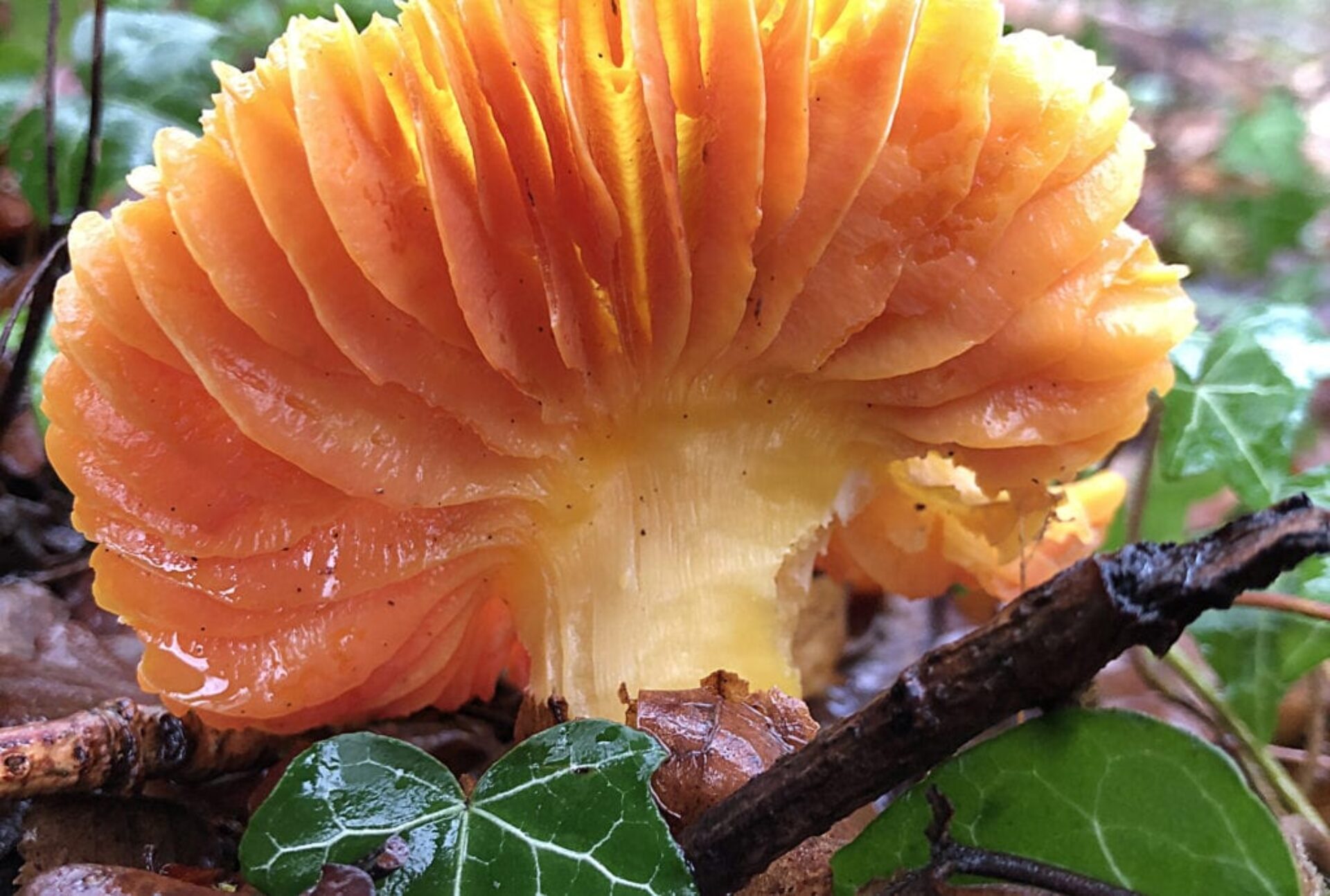
Some waxcaps are protected – so as with all fungi finding, it’s best to look but not touch. The grasslands of the UK, particularly in Wales and Scotland, are amongst the most important in the world for grassland fungi.
11. Amethyst deceivers
A small pretty purple mushroom that pops up in the autumn through leaf litter in woodland.
When they get older their colour fades and they can get mixed up with their neighbour the Deceiver (hence the name) which are just as cute, but brownish.
Scientific name: Laccaria amethystina
Where to learn more
If you’d like to learn more about the fantastic world of fungi, we recommend always cross-referencing across several sources (online and offline). Getting a few good books, avoiding those automatic ID apps (scent is often an essential part of identification), and consulting experts. Here are a few resources to get you going:
- Wildfood UK’s mushroom guide and their list of protected mushrooms.
- The National Trust who strongly discourage foraging and say ‘only photograph, never touch’.
- Roger Phillips’s book Mushrooms is perfect for getting into identification and on the shelves of all fungi enthusiasts, and he currently has a new book out called The Worldwide Forager. Find him on Instagram at @rogerphillips_redglasses
For more Instagram-based fungi goodness:
- @sporesforthought is a great city-based forager who runs little courses.
- @blackforager is funny, entertaining and a good teacher, based in Columbus, Ohio (which has lots of the same fungi as the UK)
- @this_forest_floor for amazing macro photography.
- @theartofmushrooms is a research space for the curator of the awesome mushrooms show at Somerset House last year.
- @londonfungusnetwork are hosting great online talks with expert speakers from across the UK and organising forays too.
And Greenpeace UK’s own amateur enthusiasts:
- Rima: @funkgi_friends
- Hannah: @hannah_davey